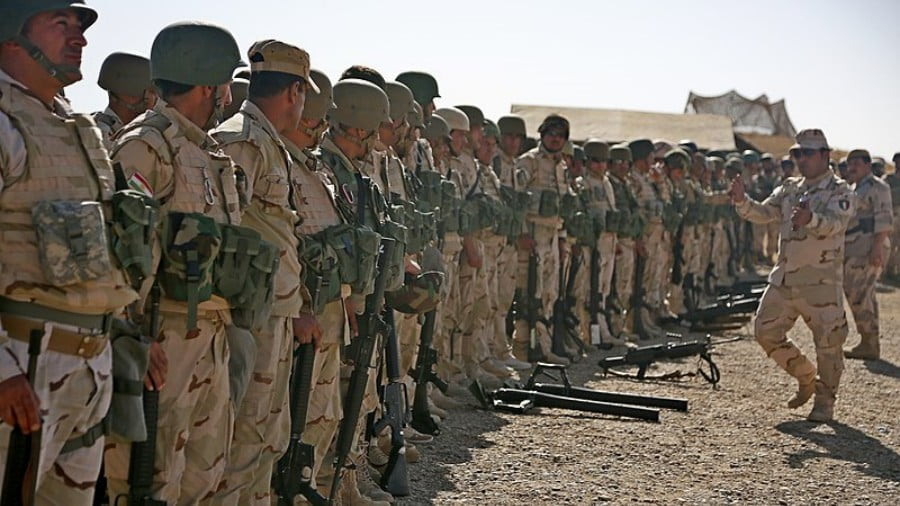Ignoring the Astana Talks, the US Is Increasing Its Military Presence in Syria’s Deir ez-Zor Province
President Trump’s announcement that he intends to order the US military out of Syria attracted a lot of public attention, unlike the war preparations that preceded and followed those statements.
Three months ago, the American military established an outpost in Manbij, in the wake of Turkey’s threats to seize control of the area. The US has some 300 soldiers based at two facilities there. In March, US Marines beefed up the military presence at the Al-Tanf base in southern Syria that is located just a few miles from the Jordanian border. The American military has established a 55-km. no-go zone around that facility.
On May 15, US personnel were reported to be setting up a new base in Badiyeh al-Sha’afa in Syria’s Deir ez-Zor province. It’s hard to believe that this move is justified by the need to confront the Islamic State — that once-powerful enemy now on the brink of extinction. One does not need new bases to finish it off. The Syrian army is well versed in how to do that.
Last month US forces were also reported to be building a new outpost at the al-Omar oil field in southeastern Deir ez-Zor. They were deployed to positions around the Conoco and al-Jafreh oil fields. On April 7, the area around the oil fields in Deir ez-Zor was declared a military zone by the US-led SDF. That group has already clashed with Syrian forces in the fight to control the province.
The SDF is constantly reinforcing its positions in Deir ez-Zor as part of its ongoing Operation Al-Jazeera Storm, which was launched on May 1. It recently seized al-Baghuz and is pushing the remaining ISIS forces out of the pocket of Hajin and al-Dashisha along the border with Iraq. These operations are coordinated with the Iraqi air force. The SDF Arab-Kurdish forces have liberated about 65 square kilometers from Daesh. Making short work of whatever is left of the Islamic State is certainly a good thing, but Syrian troops will not be allowed in. The territory will become part of a quasi-state created to become a separate entity.
Despite its recent claims to the contrary, the US is hunkering down in Syria for the long haul. The US, Saudi Arabia, and France have already discussed the possibility of joint actions against Iran. The administration is pressing its Arab allies to do more. French forces are already operating in Deir ez-Zor together with the SDF.
The US buildup in northeastern Syria is important for cutting off any direct land route from Tehran across to the Mediterranean.
It is symbolic that the United States was not present at the Astana round of talks on May 14-15. It shows that Washington is no longer interested in de-escalation zones. It wants a divided Syria, with a new, pro-US entity on the map of the Middle East. It is creating local governing bodies that operate independently from Damascus, with enough money flowing in to keep them functional. And it would like to see other parts of Syria plunge into an all-against-all war. Instead of nation-building, Washington is engaged in nation-destruction. That’s why it continues to train rebel forces at Al-Tanf. The militants are not undergoing special exercises to hone their skills for peacekeeping operations, but rather for subversive activities.
Syria’s territorial integrity is guaranteed by UN Resolution 2254 — a binding document that the US, along with France, is in flagrant violation of.
But what if the US achieves in Syria what it wanted to do in Iraq — create a prosperous, pro-Western “democratic” state that can become a shining example for other Arab states to follow? The Iraqis have failed to grasp this “opportunity.” On May 15, they proved that once again by voting for Muqtada al-Sadr, the leader of Saraya al-Salam, who fought against the US-imposed “liberation.”
The UN General Assembly’s condemnation of Washington’s decision to relocate its embassy in Israel from Tel Aviv to Jerusalem shows how badly the US needs a success to rescue its waning clout in the region. Becoming the leader of the anti-Iranian coalition is how they’ve decided to do that and the location for that is Syria. The creation of a pro-Western entity in northeastern Syria will weaken Iran’s influence in Iraq and keep Russia contained.
But things could go the other way around. What if the Kurdish-dominated forces plunge into clashes with the local Arab population and the problems of inefficient local governance mount, while the Astana process makes progress thanks to the cease-fire and restoration of peaceful life in the de-escalation zones? A Kurdish-dominated entity, even if it is pro-US, is not something that Turkey may like or accept. Will the partition of Syria boost US standing in the region? Other Arab nations will think twice about letting America play a role in the management of any conflict. There are more questions than answers, but we have what we have — the US military presence in Syria is ballooning, hampering peace efforts and provoking armed conflicts.







